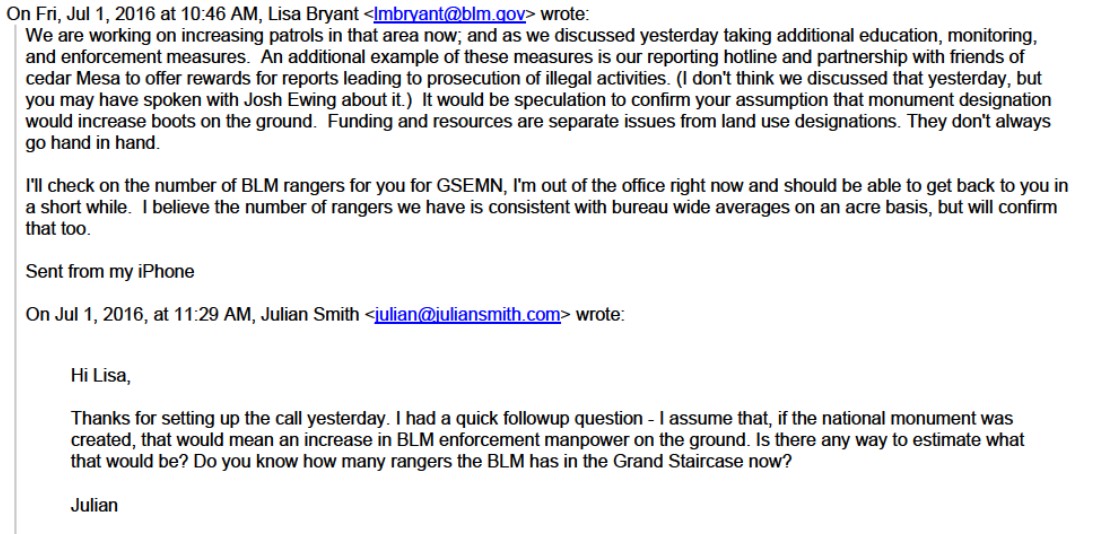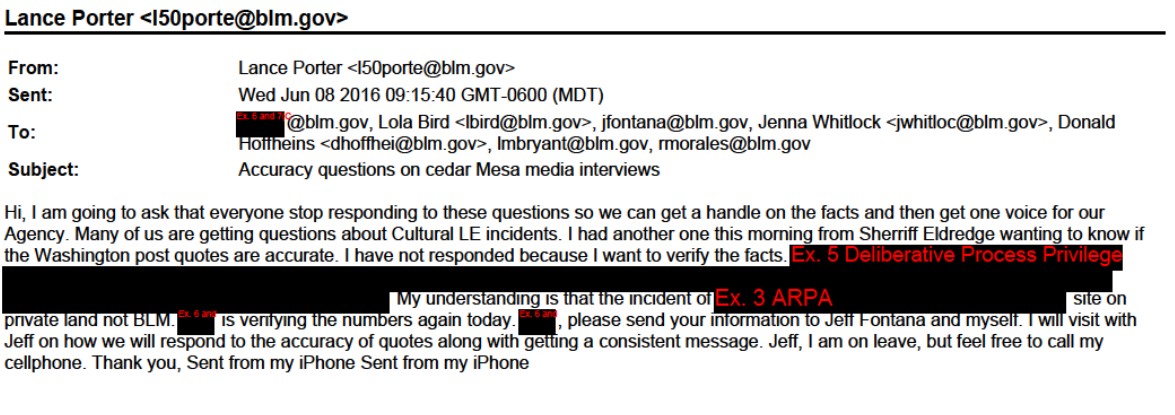We recently began our series of blog posts examining the history, purpose, limitations, and the Trump administration’s review of the Antiquities Act of 1906, 54 U.S.C. §§ 320301 – 320303 (“Antiquities Act” or the “Act”). This week we discuss the status of President Trump’s Executive Order on the Review of Designations Under the Antiquities Act.
As discussed in our previous posts, the Antiquities Act permits a president to proclaim “historic landmarks, historic and prehistoric structures, and other objects of historic or scientific interest” as national monuments. To protect these objects, the President also is permitted to “reserve parcels of land as part of the national monument” subject to the limitation that “the parcels are confined to the smallest area compatible with proper care and management of the objects to be protected.[1]
On April 26, 2017, President Trump signed the Executive Order on the Review of Designations Under the Antiquities Act (“Antiquactities Act E.O.”), which directs the Secretary of the Interior to review all national monuments created by the Antiquities Act since January 1, 1996 that measure more than 100,000 acres or lacked appropriate public input. In addition, review of some Marine National Monuments are the subject of section 4 of the April 28, 2017 Executive Order on Implementing an America-First Offshore Energy Strategy (“Offshore Energy E.O.”).
In conducting its review of these national monuments, the Department of Interior is seeking public comments related to the seven considerations set forth in the Antiquities Act E.O.: (1) whether the monument designations are limited to “the smallest area compatible with the proper care and management of the object to be protected”; (2) whether the designated lands are “historic landmarks, historic and prehistoric structures, [or] other objects of historic or scientific interest” within the meaning of the Act; (3) the impacts of designations on the use of Federal lands; (4) the impacts of designations on non-Federal inholdings or lands near the monument boundaries; (5) concerns of “State, tribal, and local governments affected by the designation”; (6) whether there are sufficient Federal resources to manage the designated lands; and (7) other factors deemed appropriate by the Secretary.
Comments related to the Bears Ears National Monument in Utah closed on May 26, 2017. Comments related to all other national monuments are open until July 10, 2017. Pursuant to the Antiquities Act E.O., the Secretary of the Interior must provide an interim report regarding Bears Ears by June 10, 2017 and a final report on all monuments under review by August 24, 2017. The Offshore Energy E.O. requires a final report from the Secretary of Commerce regarding certain Marine National Monuments by October 25, 2017.
Cause of Action Institute (“CoA Institute”) submitted comments regarding Bears Ear National Monument on May 26, 2107. Our comments, which can be read here focused on several key issues, such as the lack of transparency in the monument designation process and the lack of sufficient Federal resources to manage the designated lands.
Several days after submitting our comments, CoA Institute received the first installment, totaling some 1,300 records, in response to one of our two Freedom of Information Act (“FOIA”) requests seeking records related to Bears Ears National Monument. That FOIA request was based on conversations with local stakeholders and publicly available reports and sought, among other things, records relating to incidents of looting, vandalism, and damage to antiquities located on Bureau of Land Management-held (“BLM”) lands in San Juan County, Utah that ultimately were included as part of Bears Ears National Monument on December 28, 2016.
Several of the responsive records released to CoA Institute substantiate the concerns we raised in our May 26, 2017 comments. First, in regards to Federal resources to manage the designated lands, the records demonstrate that there are, at most, only two BLM rangers who patrol the entire million-plus acres of BLM-administered land in San Juan County. This is roughly the same number of BLM Rangers who patrol the approximately 2.5 million acres in Grand Staircase Escalante National Monument and the BLM Kanab Field Office.
Read the released emails here
Although Bears Ears also has a significant number of volunteers who act as site stewards, the released records show that patrolling these vast resources is complicated. For example, responding to incidents that occur at archaeological sites requires not just BLM Rangers, but also BLM archaeologists to assess damage and remediate as necessary. In some instances, Rangers and archaeologists can only access the damaged sites with the aid of climbing equipment. Because BLM does not have policies or certifications related to rock climbing or repelling and thus may not have qualified personnel on site, some of these investigations have been barred from proceeding. Resources to patrol and protect this area were and continue to be an issue, as stated by a BLM employee in response to a question assuming that monument designation would confer additional law enforcement resources: “Funding and resources are separate issues from land use designations. They don’t always go hand in hand.”
Read the released emails here
In our comments regarding Bears Ears, CoA Institute also highlighted the lack of transparency in the monument designation process and suggested several remedies for addressing transparency concerns moving forward, including releasing information regarding incidents of looting and vandalism of antiquities on the lands reserved as part of the monument. The documents released to us last week illustrate why this is necessary. In the months prior to the creation of the Bears Ears National Monument, there were conflicting reports regarding the number of incidents of looting and vandalism in the proposed monument area. Individuals on both sides of the monument advocacy efforts used these conflicting reports to their own ends, adding additional confusion to an already heated debate.
Read the released emails here
The confusion regarding incident reports was also apparent within the BLM itself—not because BLM did not have the data regarding the incidents, but rather because it did not have an efficient, timely reporting mechanism in place to make such information easily retrievable.
As the Secretary of the Interior continues his review of recent monument designations, CoA Institute will continue to examine and release records relevant to this effort as they are received.
Any questions, commentary, or criticisms? Please e-mail us at kara.mckenna@causeofaction.org and/or cynthia.crawford@causeofaction.org
Cynthia F. Crawford is a Senior Counsel at Cause of Action Institute.
Kara E. McKenna is a Counsel at Cause of Action Institute. You can follow her on Twitter @Kara_McK


